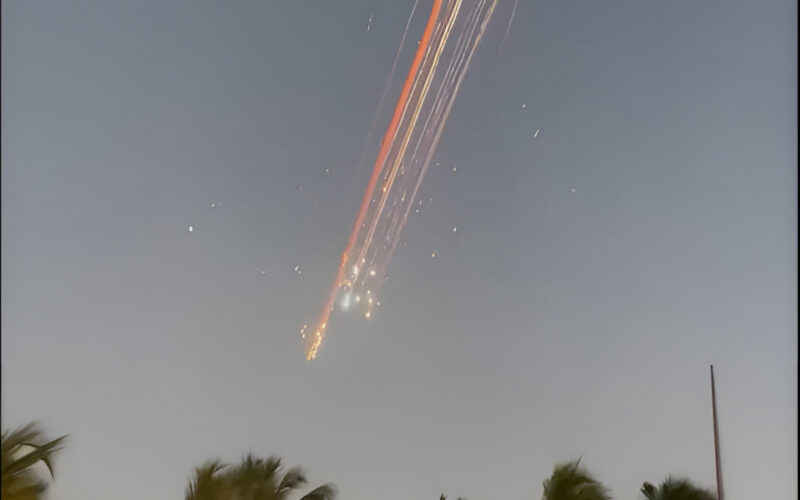In an unexpected turn of events, SpaceX’s Starship rocket self-destructed during a test flight over the Caribbean, leading to flight diversions and raising safety concerns. The incident occurred on 16th, as the spacecraft encountered technical difficulties shortly after liftoff.
The self-destruction sequence was initiated as a precautionary measure to prevent potential hazards after anomalies were detected in the system. Debris from the rocket fell into uninhabited areas of the Caribbean, with no reported injuries or significant damage.
As a result of the incident, several flights in the region were diverted as a safety protocol, causing delays for passengers. Aviation authorities and SpaceX are currently coordinating efforts to minimize the impact on air travel.
SpaceX has released a statement emphasizing the experimental nature of the Starship program, describing the event as a valuable learning opportunity. The company remains committed to its ambitious goal of developing a reusable spacecraft capable of carrying humans to the Moon and Mars.
Authorities and SpaceX teams are investigating the cause of the anomaly, aiming to refine the technology for future missions.
This event highlights the challenges of pushing the boundaries of aerospace innovation, as SpaceX continues to navigate the complexities of next-generation space exploration.


Update: SpaceX Starship Explodes During Seventh Test Flight
On January 16, 2025, SpaceX’s Starship rocket disintegrated minutes after launching from Boca Chica, Texas, marking a significant setback for the company’s ambitious space exploration plans.
REUTERS
Incident Details:
Launch and Anomaly: The Starship, carrying its first test payload of ten mock satellites, lifted off successfully. Approximately eight minutes into the flight, SpaceX mission control lost contact with the spacecraft. Shortly thereafter, the rocket exploded over the Caribbean, with debris observed over regions including the Turks and Caicos Islands.
NEWS
Booster Recovery: Despite the loss of the spacecraft, the Super Heavy booster executed a successful return, being caught by mechanical arms at the launch pad—a maneuver previously achieved only once before.
AP NEWS
Impact on Aviation:
The explosion led to air traffic disruptions over the Gulf of Mexico. Dozens of commercial flights were diverted or altered their courses to avoid potential debris, causing delays at airports in Miami and Fort Lauderdale, Florida. The Federal Aviation Administration (FAA) implemented measures to prevent aircraft from encountering space debris, but normal operations have since resumed.
REUTERS
Investigation and Response:
Preliminary assessments by SpaceX CEO Elon Musk indicated that an internal leak of liquid oxygen fuel led to a pressure buildup, resulting in the rocket’s breakup. The FAA is expected to open a mishap investigation, which could impact the schedule for future Starship tests. SpaceX emphasized that each test provides valuable data to enhance the reliability of the Starship program, which aims to develop a fully reusable spacecraft capable of carrying humans to Mars.
REUTERS
Competitive Context:
On the same day, Jeff Bezos’ space company, Blue Origin, successfully launched its giant New Glenn rocket into orbit for the first time, highlighting the competitive landscape of private space exploration.
REUTERS
This incident underscores the inherent challenges in advancing aerospace technology and the complexities involved in next-generation space exploration.
Thanks a lot for sharing this with all of us you really know what you are talking about! Bookmarked. Kindly also visit my web site =). We could have a link exchange agreement between us!